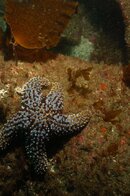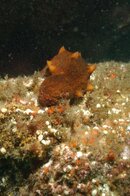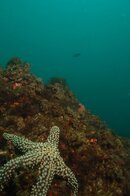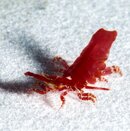Chocula
Registered
Took my DSLR diving yesterday. Conditions were fine for diving, but there was 5 to 8 ft of surge with some current, depending on which dive that day. Going deeper was not a practical option. I am looking for suggestions on how to deal with challenging conditions, specifically surge and current where I may have only a very brief opportunity for a shot.
I felt like I was participating in "Jogging Photography" a la Yes Man. Macro seemed impossible, I was frequently picking larger, static subjects and shooting from the hip as I went past, hoping for something crop-able. When I tried to setup a shot through the viewfinder, I kept having to abandon the shot to keep a safe distance from the reef. I could use the viewfinder for the "fly over" shots, but this is not what I am attempting to achieve. I am still new to the DSLR underwater, so it takes me a moment to setup everything. I am currently shooting in manual for the camera and using TTL with a single strobe.
I am including a couple of shots with no post production aside from converting to .jpg using the settings as they were in camera. These should provide a baseline as to my current abilities. The first is the best I was able to achieve that day without post processing. The second was more typical of what I got, horrible composition in camera, but maybe something I can crop. I like the composition on the last one, but I missed on the focus and should have set a smaller aperture for a larger depth of field.



I am hoping for constructive comments that will help me improve my photography.
Thanks,
-Chocula
I felt like I was participating in "Jogging Photography" a la Yes Man. Macro seemed impossible, I was frequently picking larger, static subjects and shooting from the hip as I went past, hoping for something crop-able. When I tried to setup a shot through the viewfinder, I kept having to abandon the shot to keep a safe distance from the reef. I could use the viewfinder for the "fly over" shots, but this is not what I am attempting to achieve. I am still new to the DSLR underwater, so it takes me a moment to setup everything. I am currently shooting in manual for the camera and using TTL with a single strobe.
I am including a couple of shots with no post production aside from converting to .jpg using the settings as they were in camera. These should provide a baseline as to my current abilities. The first is the best I was able to achieve that day without post processing. The second was more typical of what I got, horrible composition in camera, but maybe something I can crop. I like the composition on the last one, but I missed on the focus and should have set a smaller aperture for a larger depth of field.



I am hoping for constructive comments that will help me improve my photography.
Thanks,
-Chocula





